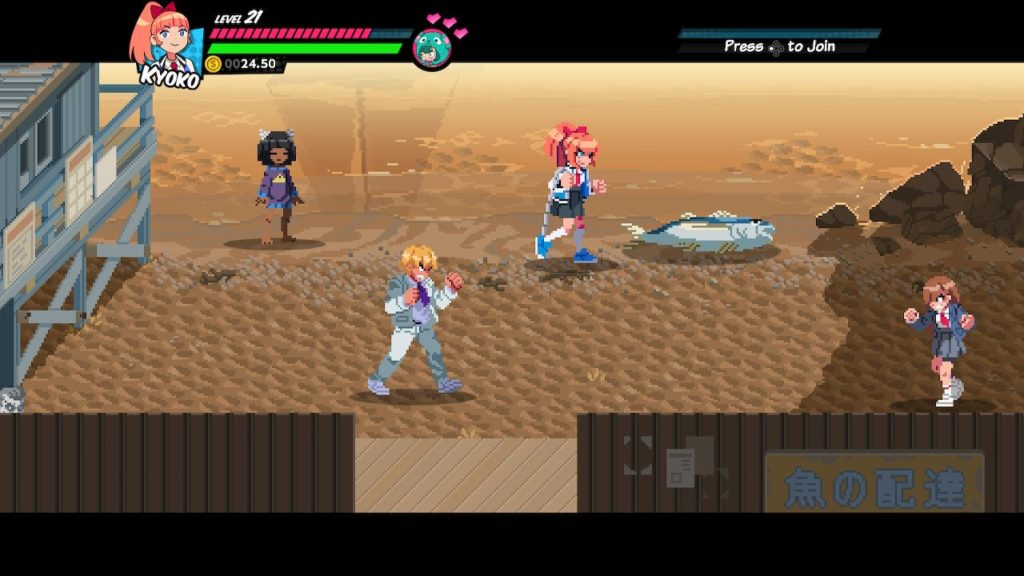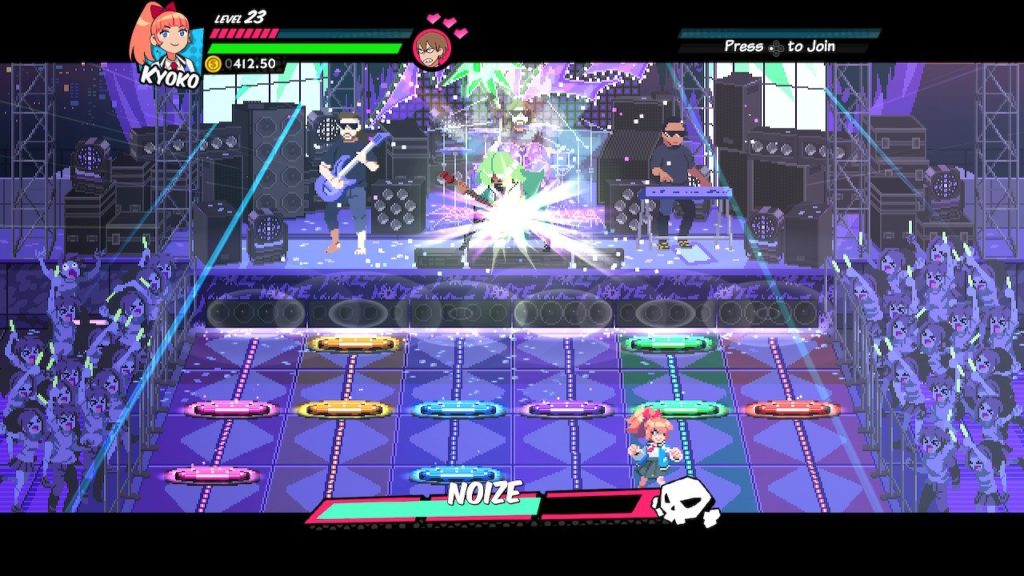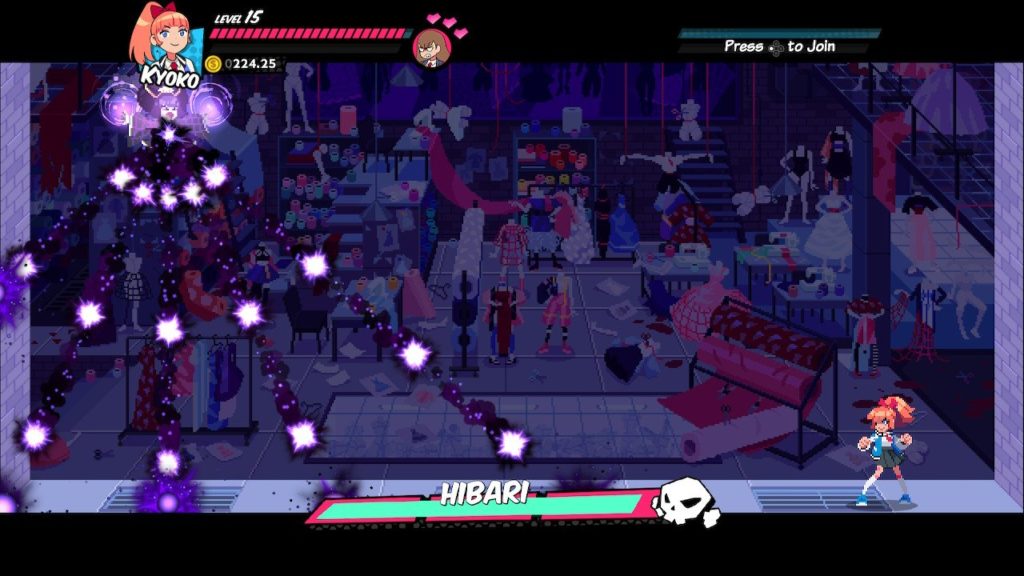More info from Arc System Works (Japanese)
- Genre: Beat ’em up
- Platform: Switch
- Also Available On: PS4, Xbox One, Windows
If there’s any game that was ever a no brainer for me, it’s this one. I’ve played the hell out of the Kunio-kun series, whether it’s in the brawler River City titles, or the off the wall ones like Super Dodgeball. This one tapped WayForward as a developer, and I’ve played the hell out of the Shantae series. Combine them into one place? You better believe I’m all in.

If there’s any place to start with this one, it’s that the game is so mechanically sound in a way that 2.5d brawlers somehow always seem to stumble on. As a developer, it’s easy for me to dismiss the complexity behind making a few combat buttons feel good, but a lot of games seem to get it really wrong. However, this one just feels really smooth in action. It’s really easy to tell where I am in my combos, allowing me to mix light and heavy attacks effectively. Enemy tells are really solid, but not super easy, so my ability to block always feels really fair and skill based. There’s enough weapons thrown in the environment (and easy ability to use your enemies as weapons) to give a bit of fun extra chaos to the combat. It just feels really solid the whole way through.
If there’s any real tripping point in the control scheme for combat, it’s that the left face button (X on Switch) is really overloaded with contextual inputs. It’s your light attack button, but it’s also the button to pick weapons up, and it’s also the button to go to a new zone or enter shops when near them. It’s pretty easy in the chaos of a lot of people to accidentally travel or pick up a weapon, leaving you open to be attacked. Luckily the boss fights tended to be 1 on 1 encounters, so it was never really a big hazard.

Speaking of boss fights, that’s where the game really shines. You’ve got a few standard face smacking combat bosses, but there’s some really different mechanics at play here. There’s a boss at about the mid point of the game that is almost entirely a bullet hell fight, with the ultimate goal being to direct the boss to hit themselves with a deflected projectile to allow the player to damage them. There’s also a really fun boss that involves avoiding the buttons on a Guitar Hero-style running board in order to get between combat phases. Overall, these boss fights allow for some breathing room in the core mechanics to where the game isn’t just a core brawler the whole time. They exist both as large challenges that definitely have to be learned, but also exist as a way to introduce fun new ways to think about the player’s skill set, and end up breaking up the game in a way I wasn’t really anticipating.
The rest of the game’s core is pretty standard, but well put together. There’s a light layer of RPG leveling and stat improvement, giving the player a pretty concise and obvious power curve. There’s a wide range of accessory items that can be used to help the player pad out skills or damage based on their preferred play style. There’s a dojo to learn new skills based on your level. Most importantly, and very much hidden, there’s food shops to buy health items. However, the first time a specific health item is consumed, it gives you a permanent stat boost. This is extremely important to the player’s power curve, and it’s curious that it is not mentioned in-game (or I’m dumb and missed it), but it works extremely well in practice, as the player inevitably will need to hop into a shop to get some health along the way.

I suppose this is a bit of a short rambling, but really there’s not much to say here that would be a surprise. It’s a great developer known for making 2d action games in a series known for great 2.5d action, and it follows the formula it helped establish in a very modern-focused way. If you like anything like Turtles in Time, Double Dragon, or River City Ransom, you know what you’re getting into and you will definitely be happy. If not, I couldn’t think of a better place to start.
